Lack of Consistent Malaria Incidence Hotspots in a Highland Kenyan Area During a 10-Year Period of Very Low and Unstable Transmission
- PMID: 33124534
- PMCID: PMC7695093
- DOI: 10.4269/ajtmh.19-0821
Lack of Consistent Malaria Incidence Hotspots in a Highland Kenyan Area During a 10-Year Period of Very Low and Unstable Transmission
Abstract
The use of spatial data in malaria elimination strategies is important to understand whether targeted interventions against malaria can be used, particularly in areas with limited resources. We previously documented consistent areas of increased malaria incidence in the epidemic-prone area of Kipsamoite in highland Kenya from 2001 to 2004. In this area and a neighboring subcounty (Kapsisiywa), malaria incidence decreased substantially in 2005, going from peak incidence of 31.7 per 1,000 persons in June 2004 to peak incidence of 7.4 per 1,000 persons in May 2005. Subsequently, the use of indoor residual spraying and artemisinin combination therapy malaria treatment led to a possible interruption of malaria transmission for a 13-month period from 2007 to 2008, after which the incidence returned to very low levels until an epidemic in April-July 2013. In the present study, we used novel kernel density estimation methods to determine whether areas of increased malaria incidence were consistent in six periods of peak incidence from 2003 to 2013, and to assess patterns of incidence in the period before versus. after the period of possible interruption. Areas of highest incidence differed during peak malaria transmission periods over the years 2003-2013, and differed before and after the potential malaria interruption. In this epidemic-prone region with very low malaria transmission, consistent malaria "hotspots" identified in a time of higher transmission are no longer present. Ongoing assessment of spatial malaria epidemiology to identify and target current areas of elevated malaria risk may be important in campaigns to control or eliminate malaria in epidemic-prone areas.
Conflict of interest statement
Financial support: This project was supported by grants from NIH-NIAID (NCT00393757), NIH Fogarty International Center (D43 TW0080085), the University of Minnesota Amplatz Children’s Hospital, and an NIH research training grant (R25 TW009345) awarded to the Northern Pacific Global Health Fellows Program by Fogarty International Center in partnership with several NIH Institutes (NIMH, NIGMS, NHLBI, OAR, and OWH).
Disclosure: This study was published with the permission of the director of the Kenya Medical Research Institute.
Disclaimer: The funding agencies were not involved in any aspect of the study including design, analysis, or interpretation of results.
Figures


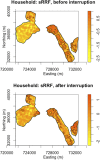
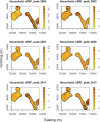

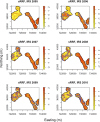
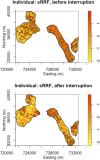
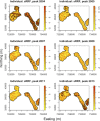
Similar articles
-
Possible interruption of malaria transmission, highland Kenya, 2007-2008.Emerg Infect Dis. 2009 Dec;15(12):1917-24. doi: 10.3201/eid1512.090627. Emerg Infect Dis. 2009. PMID: 19961670 Free PMC article.
-
Decreased prevalence of anemia in highland areas of low malaria transmission after a 1-year interruption of transmission.Clin Infect Dis. 2012 Jan 15;54(2):178-84. doi: 10.1093/cid/cir768. Epub 2011 Nov 3. Clin Infect Dis. 2012. PMID: 22052892 Free PMC article.
-
A Mass Insecticide-Treated Bed Net Distribution Campaign Reduced Malaria Risk on an Individual but Not Population Level in a Highland Epidemic-Prone Area of Kenya.Am J Trop Med Hyg. 2020 Dec;103(6):2183-2188. doi: 10.4269/ajtmh.19-0306. Epub 2020 Oct 27. Am J Trop Med Hyg. 2020. PMID: 33146104 Free PMC article.
-
Malaria Hotspots: Is There Epidemiological Evidence for Fine-Scale Spatial Targeting of Interventions?Trends Parasitol. 2019 Oct;35(10):822-834. doi: 10.1016/j.pt.2019.07.013. Epub 2019 Aug 29. Trends Parasitol. 2019. PMID: 31474558 Review.
-
Impact of the large-scale deployment of artemether/lumefantrine on the malaria disease burden in Africa: case studies of South Africa, Zambia and Ethiopia.Malar J. 2009 Oct 12;8 Suppl 1(Suppl 1):S8. doi: 10.1186/1475-2875-8-S1-S8. Malar J. 2009. PMID: 19818175 Free PMC article. Review.
Cited by
-
Evolution of Spatial Risk of Malaria Infection After a Pragmatic Chemoprevention Program in Response to Severe Flooding in Rural Western Uganda.J Infect Dis. 2024 Jan 12;229(1):173-182. doi: 10.1093/infdis/jiad348. J Infect Dis. 2024. PMID: 37584317 Free PMC article.
-
Spatiotemporal dynamics of malaria in Zanzibar, 2015-2020.BMJ Glob Health. 2023 Jan;8(1):e009566. doi: 10.1136/bmjgh-2022-009566. BMJ Glob Health. 2023. PMID: 36639160 Free PMC article.
-
Spatial-temporal clustering of malaria using routinely collected health facility data on the Kenyan Coast.Malar J. 2021 May 20;20(1):227. doi: 10.1186/s12936-021-03758-3. Malar J. 2021. PMID: 34016100 Free PMC article.
-
Recent Molecular Assessment of Plasmodium vivax and Plasmodium falciparum Asymptomatic Infections in Botswana.Am J Trop Med Hyg. 2021 May 3;104(6):2159-2164. doi: 10.4269/ajtmh.21-0083. Am J Trop Med Hyg. 2021. PMID: 33939635 Free PMC article.
-
Opportunities for Subnational Malaria Elimination in High-Burden Countries.Am J Trop Med Hyg. 2020 Dec;103(6):2153-2154. doi: 10.4269/ajtmh.20-1342. Epub 2020 Oct 27. Am J Trop Med Hyg. 2020. PMID: 33124536 Free PMC article. No abstract available.
References
-
- Summers J, 1989. Soho – A History of London’s Most Colourful Neighborhood. London: Bloomsbury.
-
- Roll Back Malaria Partnership , 2008. The Global Malaria Action Plan. Technical Report. Geneva, Switzerland: World Health Organization.
-
- Feachem RGA, Phillips AA, Targett GA, editors, 2009. Shrinking the Malaria Map: A Prospectus on Malaria Elimination. San Francisco, CA: The Global Health Group, Global Health Sciences, University of California, San Francisco.
Publication types
MeSH terms
Substances
Grants and funding
LinkOut - more resources
Full Text Sources
Medical
Miscellaneous

